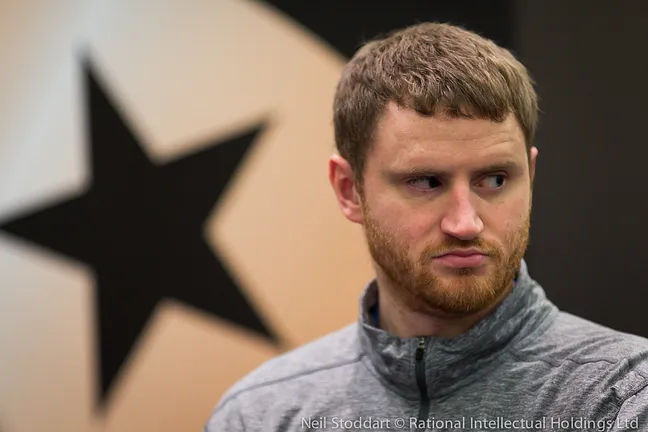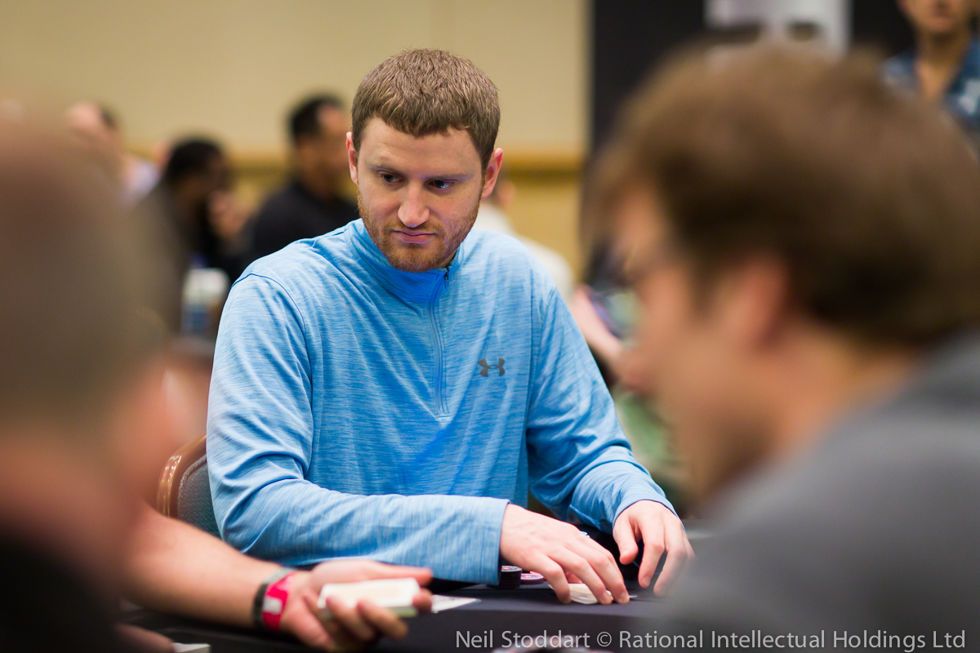2016 GPI Player of the Year David Peters: "It's the Prestige and the Respect That Comes With It That's Important"


The PokerStars Championship Bahamas has kicked off a new poker year and with it, a new Global Poker Index Player of the Year race. It was an exciting race to keep track of last year. Fedor Holz led for most of it, but a lot of people got close on his heels as the year came to a close. In the end, the last big event of the year made all the difference. David Peters made a deep run in the PokerStars EPT Prague Main Event to overtake Fedor Holz; his third-place finish netted him 482.29 Player of the Year points and eventually secured him the GPI POY win.
Peters cashed an incredible 28 times in 2016, taking home the trophy five times, among them his first ever World Series of Poker bracelet. With his cashes totaling $7,564,647, it's sufficient to say that 2016 was a good year for David Peters.
The GPI title doesn't bring along a hefty prize. It's the honor of being named the top poker player of a year that matters to Peters, who's currently playing Day 2 of the PokerStars Championship Bahamas $100,000 Super High Roller.
"It was a goal of mine and definitely means a lot to me," he said. "It's the prestige and the respect that comes with it that's important. To be in the same group as others that have won in the past is definitely a nice thing to accomplish."
While it was Peters' goal to win the GPI Player of the Year race, so it was for a lot of other players probably. He didn't plan his schedule in an attempt to win it; the victory just happened.
"I guess it didn't affect my schedule too much," Peters said, "I was probably going to play a similar schedule regardless."
While a high roller like Peters is likely to play a heavy schedule every year �� there are just too many good tournaments to pass on �� the race he was doing well in helped him a great deal.
"To have that in the back of your mind, it gives you extra motivation to be more focused and play your A-game," he said.
Three-handed in the last ever EPT Main Event, Peters had a healthy lead over his two opponents when discussions of a deal emerged. They did not reach an agreement, and things went sour quickly after that.
"I lost a couple pots and got pretty short," he said. "It was a pretty awkward situation after that with the chip leader having all the chips and we were kinda like battling for second place. I had to play way tighter than I wanted to."
That third place in the PokerStars EPT Prague Main Event gave him � 397,300 and a hammerlock on the POY race, but getting so close yet failing to grab the last EPT did hurt.
"That was very very frustrating," Peters said. "It was obviously nice to have a big cash and pretty much lock up player of the year, but not winning was really frustrating. To get my first EPT title was a goal of mine and I was so close and in such a good position three-handed. So for then to have things not go too well towards the end was pretty frustrating."
Every year, after the Player of the Year race has culminated, a discussion about the criteria emerges. To some, doing well in high roller events with small fields isn't what should make someone Player of the Year. Peters doesn't think the metric is flawed:
"They do have the minimum of 32 people, which is good. A lot of the ARIA ones don't even count �� I actually have two firsts and a second in ARIA High Roller tournaments that didn't count towards the Player of the Year race. I think 32 is a reasonable minimum."
While not all of them counted, the ARIA High Roller tournaments have certainly had an impact on the world of poker. While a couple years ago it was something incredibly special if a $25,000 tournament ran, now they are on offer just about all the time. And not just at the ARIA, high roller tournaments were organized all over the globe. If one wanted, he or she could play a poker tournament with a buy-in of over $20,000 just about every week.
Being on the winning side of some of those, Peters obviously thinks that's a good thing.
"There's a lot of high rollers, that's for sure," he allowed. "There's people out there that want to play big so yeah, I don't see the problem with it."
When the first Super High Rollers started, people worried about the buy-ins possibly being too big. Some thought players had to be protected from themselves. They thought the poker economy could be in jeopardy if there would be a wildfire of big buy-in events. That concern wasn't shared by Peters.
"Most of the people that are playing these tournaments are smart and reasonable with how much of themselves they have," he said. "They know a lot of very rich people that can take pieces and stuff like that, so I don't think it's going to be too much of a problem. I think everyone's reasonable and have plenty of money to be playing these to begin with, so I don't think it's going to break too many people that are playing these."
So, Peters hopes they continue to run on a regular basis, and he plans to be there as long as they do. As for 2017's schedule though, a lighter load could be in store for the man from Ohio.
"I'm not exactly sure yet but I'm still going to play a lot," he said. "Maybe not as much as I did in 2016, but still a great deal. I'm just going to see what happens."
Right after the PokerStars Championship Bahamas, the Aussie Millions awaits. Peters isn't sure if he'll be going on the journey halfway around the world for his next high roller.
"I'm on the fence about Aussie Millions actually," he said. "I'm going to decide the coming week. I might take a break for a few weeks and just play online and put more time into studying and relaxing rather than playing. We'll see what happens."
| Year | GPI Player of the Year | Earnings | Cashes | Wins | Runner Up |
|---|---|---|---|---|---|
| 2016 | David Peters | $7,564,647 | 28 | 5 | Fedor Holz |
| 2015 | Byron Kaverman | $3,481,463 | 20 | 4 | Anthony Zinno |
| 2014 | Daniel Colman | $22,389,481 | 11 | 4 | Ole Schemion |
| 2013 | Ole Schemion | $1,652,679 | 18 | 4 | Daniel Negreanu |
| 2012 | Dan Smith | $3,739,797 | 18 | 6 | Marvin Rettenmaier |


